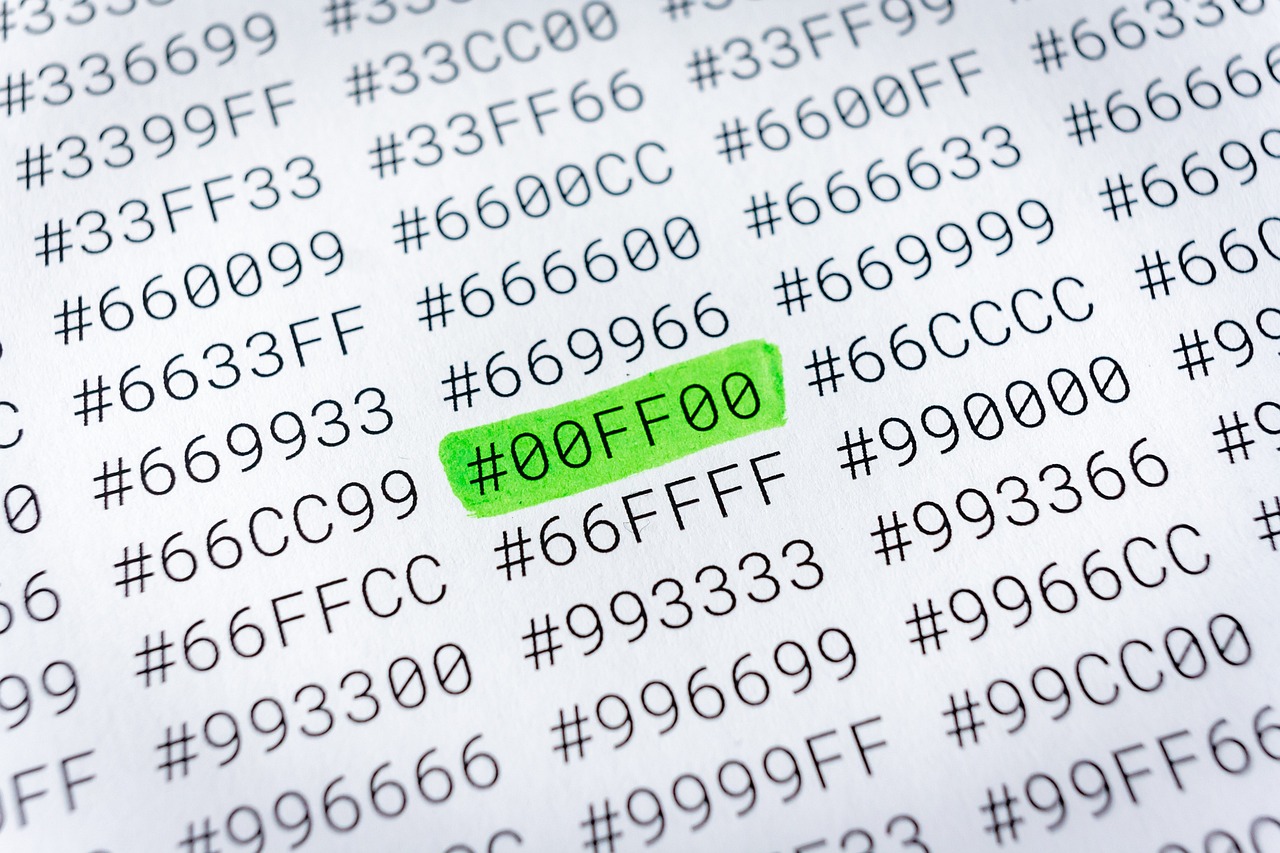How to Use Hex Codes to Give Color to Text in HTML
Using hex codes to give color to text in HTML is a simple process. Hex codes are six-digit combinations of numbers and letters that represent a specific color. To use them, you must first identify the hex code for the desired color. Once you have identified the code, you can add it to your HTML document using the style attribute.
For example, if you wanted to make a word appear in red, you would need to find the hex code for red. The hex code for red is #FF0000. To apply this color to text in an HTML document, simply add style=”color:#FF0000″ within the opening tag of your element:
<p style="color: #ff0000;">This text will be red.</p>
This will cause all of the content within that element (in this case “This text will be red”) to appear in red on your webpage or application.
Hex codes are an easy way to give color and life to any HTML document or application without having knowledge of CSS styling techniques or other more complex coding methods.
How to Use RGB Values to Give Color to Text in HTML
Using RGB values to give color to text in HTML is a simple process. RGB stands for Red, Green, and Blue and is a type of color model used in digital graphics. Each of the three colors can be assigned a value from 0-255, which when combined create different shades of colors.
To use RGB values to give color to text in HTML, you must first identify the desired shade of color you want your text to be. Once you have identified this shade, you must then assign each of the three colors (red, green and blue) a value between 0-255 that will create this desired shade when combined together.
For example if we wanted our text to appear as light pink we would need to assign red a value of 255 (the maximum), green a value of 192 and blue also 192 (as this combination creates light pink).
Exploring the Different Ways You Can Add Color To Text In HTML
Adding color to text in HTML is a great way to make your website stand out and draw attention. There are several different ways you can add color to text in HTML, each with its own advantages and disadvantages.
The most common way of adding color to text is by using SPAN the tag. This tag allows you to specify a specific color for any given piece of text within an HTML document. For example, if you wanted the word “Hello” to be red, you would use the following code:
<span style="color: red;">Hello</span>
Another option for adding color is through the use of CSS classes. By creating a class that specifies a certain font or background color, you can apply it to any element on your page with just one line of code. For example, if you wanted all headings on your page to be blue, you could create a class called “heading-blue” and then apply it like this:
<h1 class="heading-blue">Heading</h1>
No matter which method you choose when adding colors in HTML, it’s important that they are used sparingly and tastefully so as not to overwhelm visitors or detract from other elements on your page. With careful consideration and planning though, adding colors can be an effective way of making your website look more attractive and engaging!
Tips and Tricks for Adding Color To Text In HTML Without Coding
1. Use HTML character entities: HTML character entities are special characters that can be used to add color to text without coding.
2. Use bold and italic tags: Bold and italic tags can be used to add emphasis and color to text without coding. For example,
<b>bold</b>
will make the word “bold” appear in bold typeface while
<i>italic</i>
will make the word “italic” appear in italics.
3. Use span tags: Span tags allow you to apply styling attributes such as background-color or font-size directly on any element of your page without coding by using inline CSS stylesheets within them (e.g.,
<span style="background-color: #ff0000;">red background</span>
This will make the words “red background” have a red background behind them).
Q&A
Q1: How do I give color to text in HTML?
A1: You can use the tag with the style attribute and set the color property to a hexadecimal value, an RGB value, or a color name. For example:
<span style="color: #ff0000;">This text is red</span>
Q2: What are some of the different ways I can specify colors in HTML?
A2: You can specify colors using hexadecimal values (e.g. #FF0000 for red), RGB values (e.g. rgb(255,0,0) for red), or color names (e.g. “red” for red).
Q3: Is there any way to make my text bold or italicized while also giving it a color?
A3: Yes! You can use the STRONG and EM tags along with the style attribute and set the font-weight and font-style properties respectively to make your text bold or italicized while also giving it a color as described above in Q1. For example:
<em><strong style="color: #ff0000;">This text is both bold and red</strong></em>
Q4: Are there any other ways I can customize my text’s appearance beyond just changing its color?
A4: Yes! You can also change its font size by setting the font-size property within your span tag’s style attribute; you can change its alignment by setting either float or display properties; you can add borders around it by setting border properties; etc..

